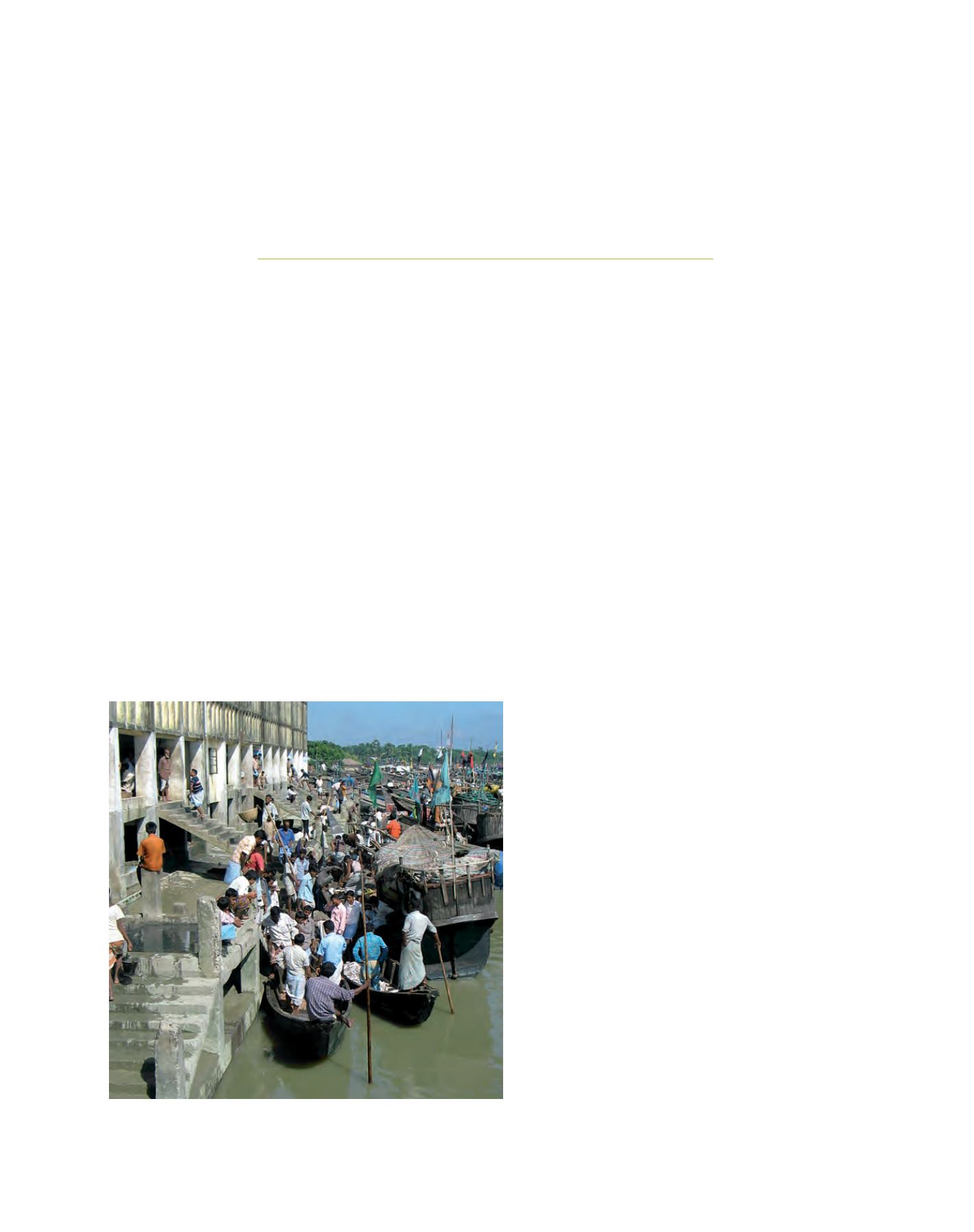

[
] 56
Combating climate change:
how prepared are poor fishing
communities in South Asia?
Yugraj Yadava, Director, Bay of Bengal Programme Inter-Governmental Organisation
C
limate change is a critical global challenge of recent
times. Several events during the last two or three
decades have dramatized our growing vulnerability to
the phenomenon. Research shows that climate change may
impact agriculture and endanger food security; trigger sea-level
rise; accelerate the erosion of coastal zones; aggravate natural
disasters; and quicken species extinction and the spread of
vector-borne diseases.
Fish exemplify global biodiversity. The world’s oceans, lakes and
rivers harbour at least 27,000 known species. Some 140 million
metric tonnes of fish are captured or raised each year, with humans
eating more than 75 per cent of this catch. Worldwide, marine and
freshwater fisheries generate over USD130 billion annually, employ
at least 200 million people, and feed billions of people who rely on
fish as their primary source of protein.
The global warming of seas, rivers and lakes threatens
fish stocks, which are already under pressure from over-
fishing, pollution and habitat loss. Such a decline in fish
catch could devastate human populations, particularly
in poorer countries that rely on fish for protein.
The impact of climate change on climatic and
oceanographic parameters in the South Asian seas
The Intergovernmental Panel on Climate Change
(IPCC) has projected that the global annual seawater
temperature and sea level will rise by 0.8 to 2.5
o
C and
8 to 25 centimetres respectively by 2050.
1
In India, the sea-level rise for Cochin on the south-
west coast during the past century has been estimated
at two centimetres.
2
Future decades may see the rate of
increase go up to five millimetres per year.
The data set on sea surface temperature (SST),
obtained from various sources, clearly shows sea surface
warming along the entire Indian coast.
3
During the 45
year period from 1961 to 2005, SST has increased by
0.2
o
C along the northwest, southwest and northeast
coasts, and by 0.3
o
C along the southeast coast. In neigh-
bouring Sri Lanka too, the surface temperature record
clearly indicates sea surface warming.
4
Fish, fisheries and global warming
Sea warming and sea-level rise may strongly impact
coastal fisheries in South Asia, aggravating the poverty
of coastal communities. Countries in the region can’t
prevent climate change, but can adopt mitigation/
preparedness strategies.
In relation to this, studies have been carried out
in India, Bangladesh, Maldives and Sri Lanka –
all are members of the Bay of Bengal Programme
Intergovernmental Organisation (BOBP-IGO) – on the
impact of climate change on fisheries and on mitigation/
preparedness strategies to counter such impact.
India
Marine capture fisheries are vital for food supply, food
security and income generation in India. Some one
million people in this sector produce three million
tonnes of fish annually. The value of fish production
T
he
I
mpacts
and
I
mplications
of
C
limate
C
hange
and
V
ariability
Too many fishing boats chasing too few fish: the overcrowded fishing harbour in
Cox’s Bazaar, Bangladesh
Image: S Jayaraj
















